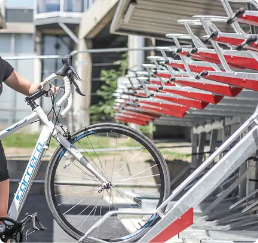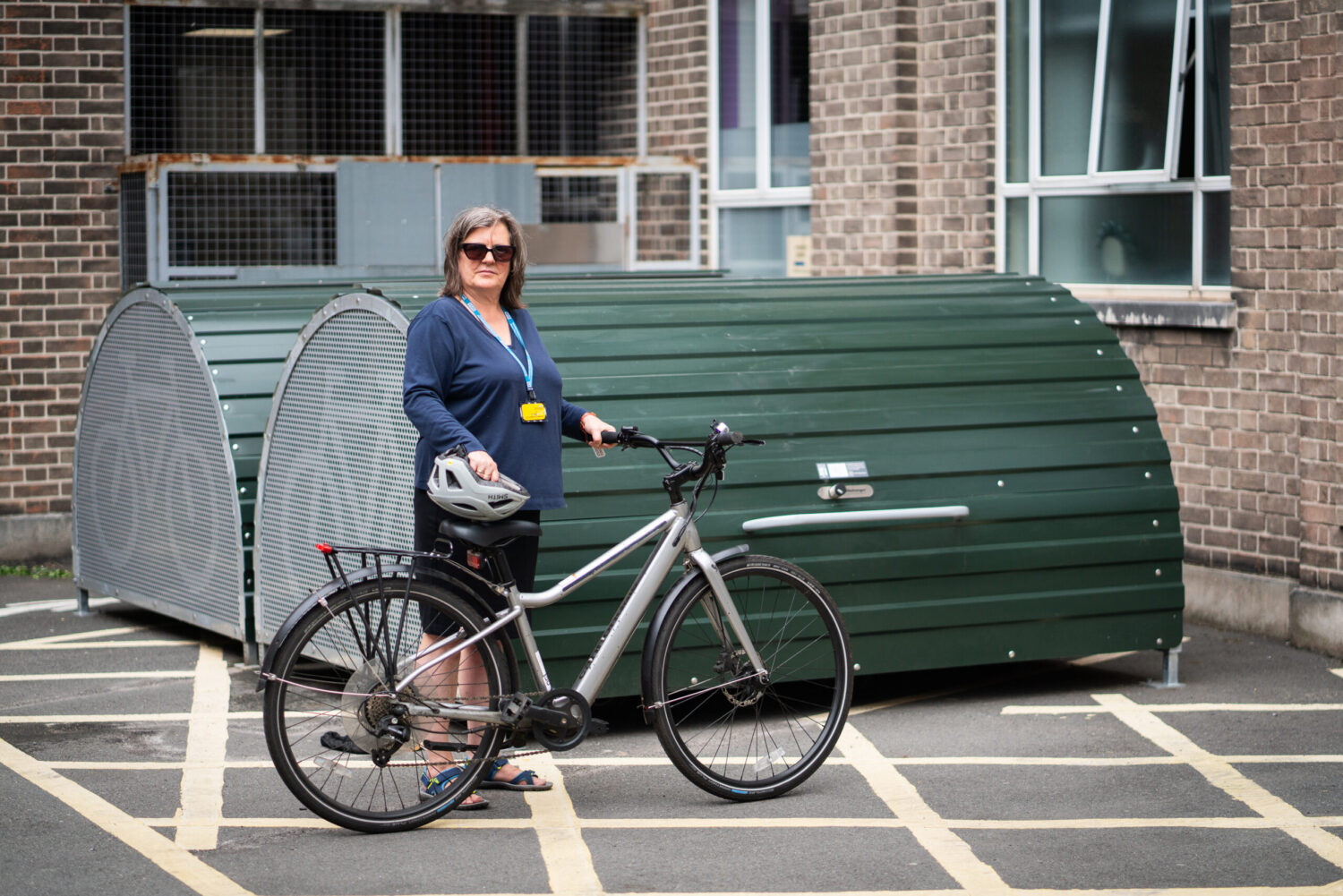Everything you need to know about two-tier bike racks from Corporate Premium Members Turvec
Two-tier bike racks create a clever way to park and store more bikes, and originate from the de facto European cycling capital, the Netherlands. But understanding how to specify and install them properly makes a big difference.
In a nutshell, two-tier bike racks exist to help efficiently park and store more bicycles. The way they work is first stacking two levels of parking on top of each other, while also staggering the heights of the bikes to fit bikes closer together without clashing.
Combining these space saving methods, it is possible to store twice the amount of bikes in the same footprint compared with Sheffield stands and other single-tier bike racks.
What does the gas-spring do? Can cycle parking be dangerous?
Gas springs support the upper tiers of two-tier bike racks, helping the user safely lower and raise their bicycle. Without gas-assisted lifting on two-tier racks, the upper tier becomes not only difficult to use, but a hazard to both users and passers by.
A typical bike can weigh anywhere between 8-30kg. Taking into account this weight, in combination with the weight of the rack, a non-gas rack presents an injury risk during its operation.
Above all else, a gas spring ensures that the user comes first and as many people as possible are able to use the racks, minimising the strength needed to lift and load a bike.
For any bike store or facility, in any instance, we only recommend specifying gas-assisted two-tier bike racks.
Read the full guide from Turvec here: Everything You Need To Know About Two-Tier Bike Racks | Turvec



































